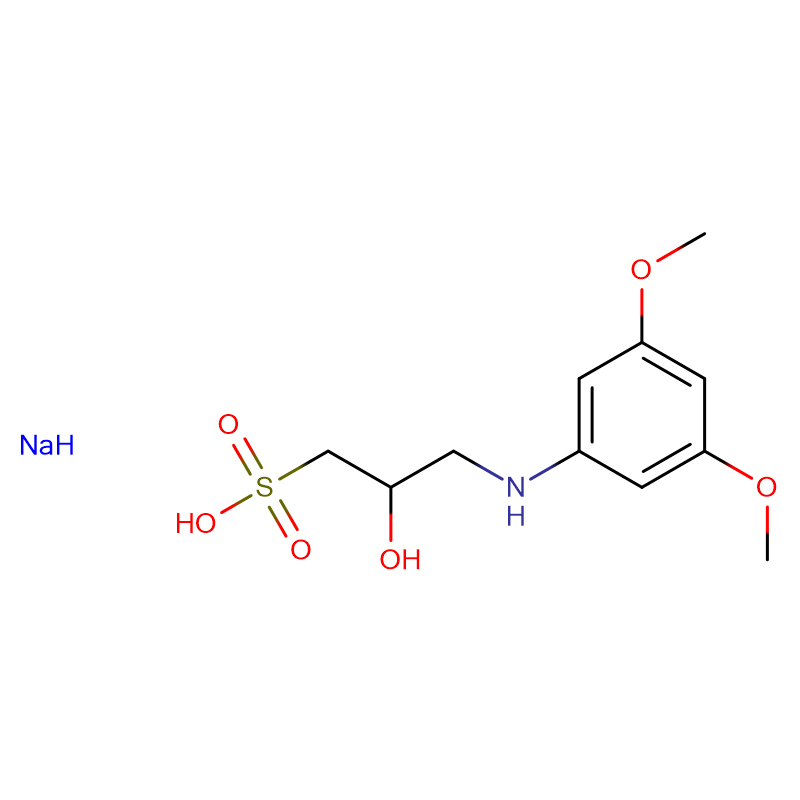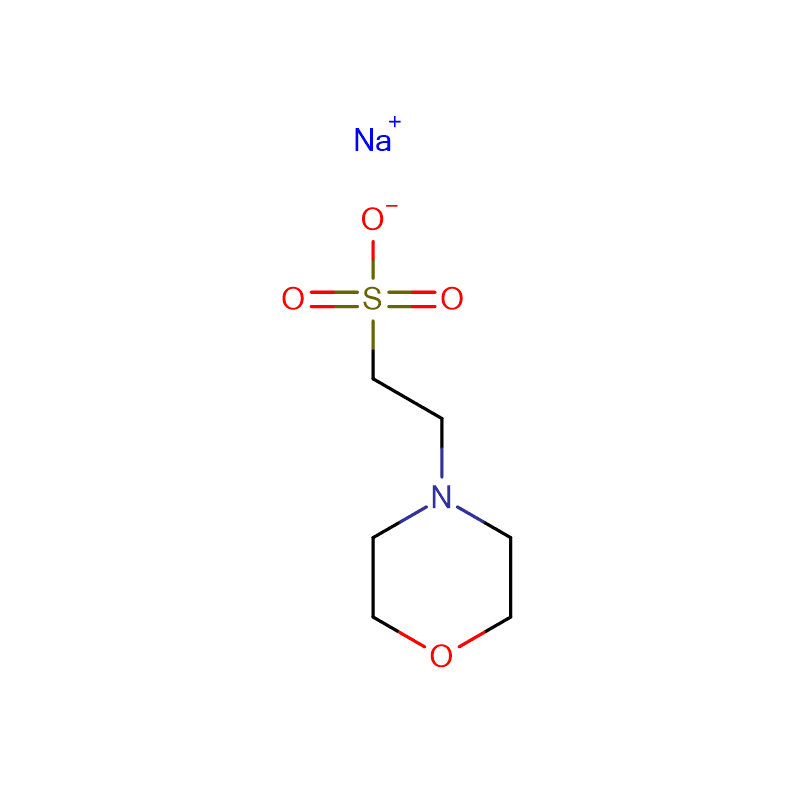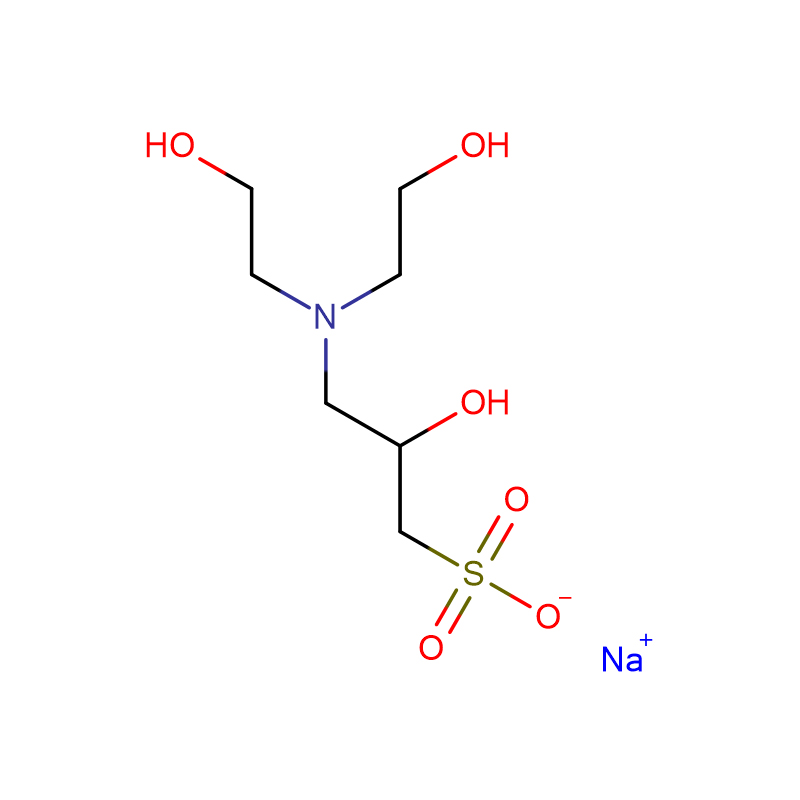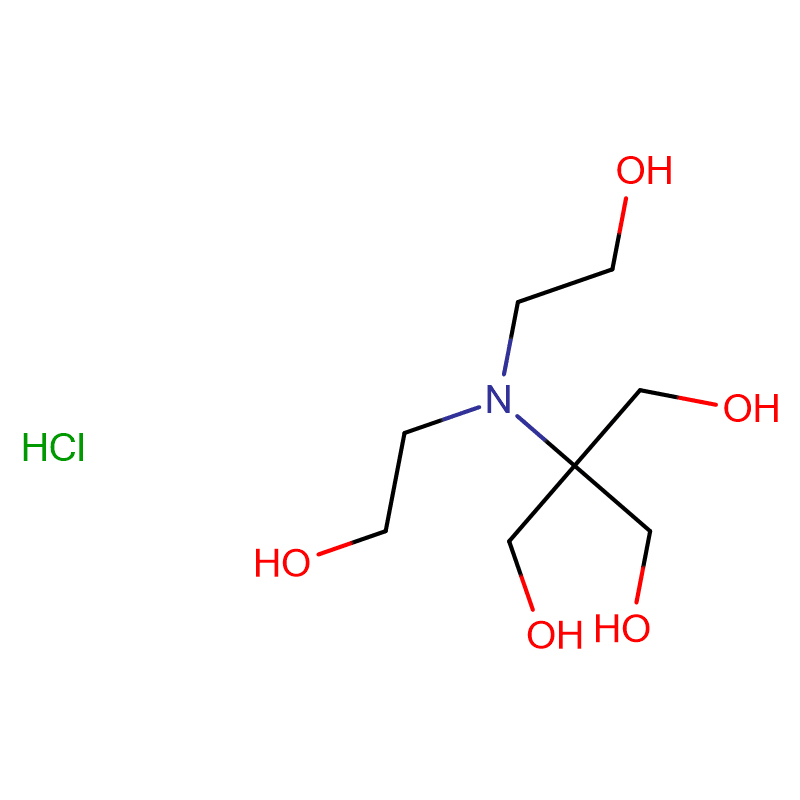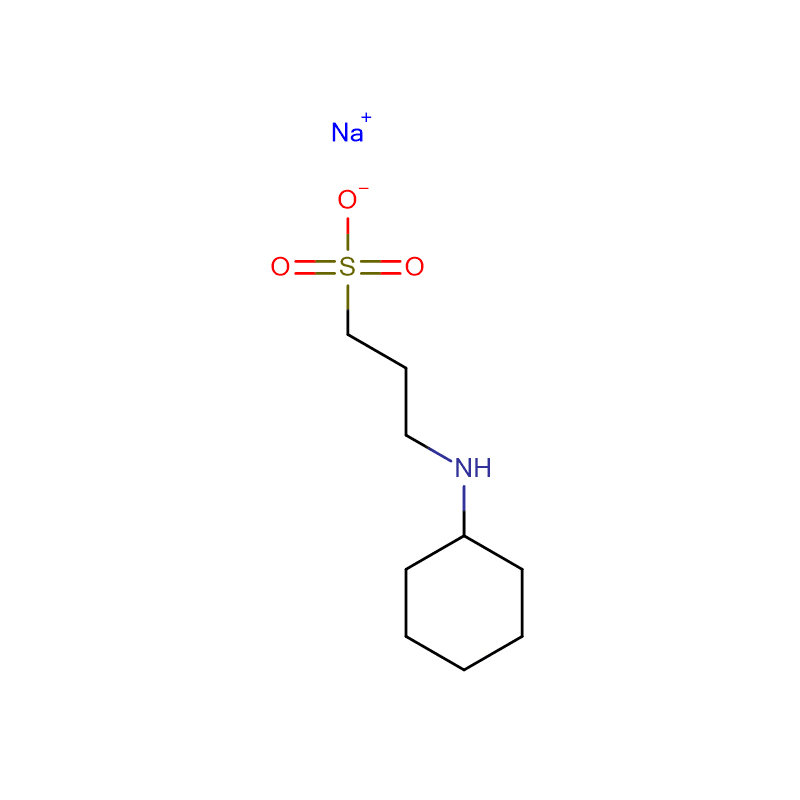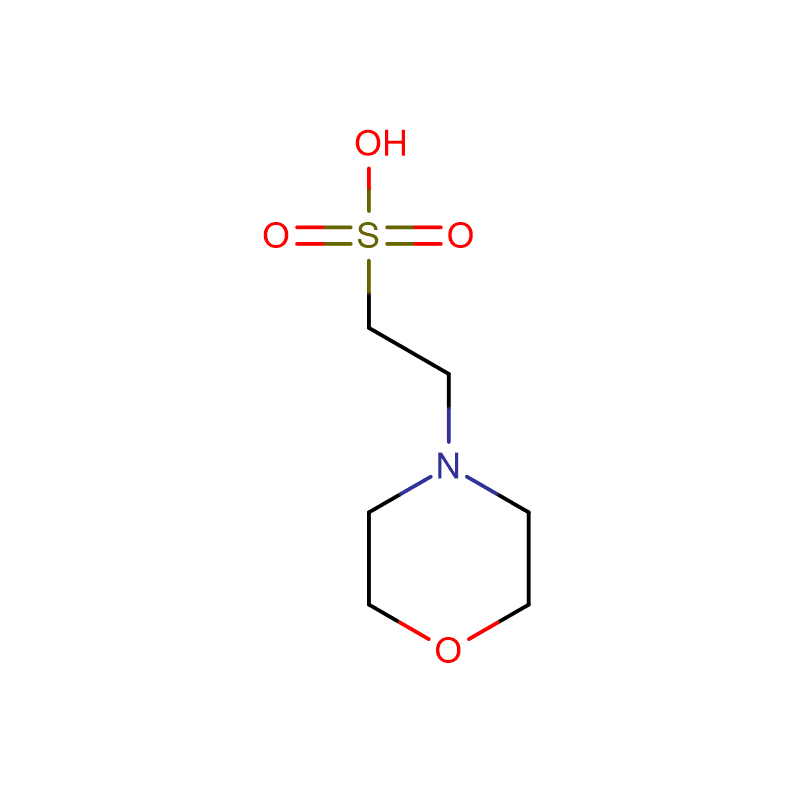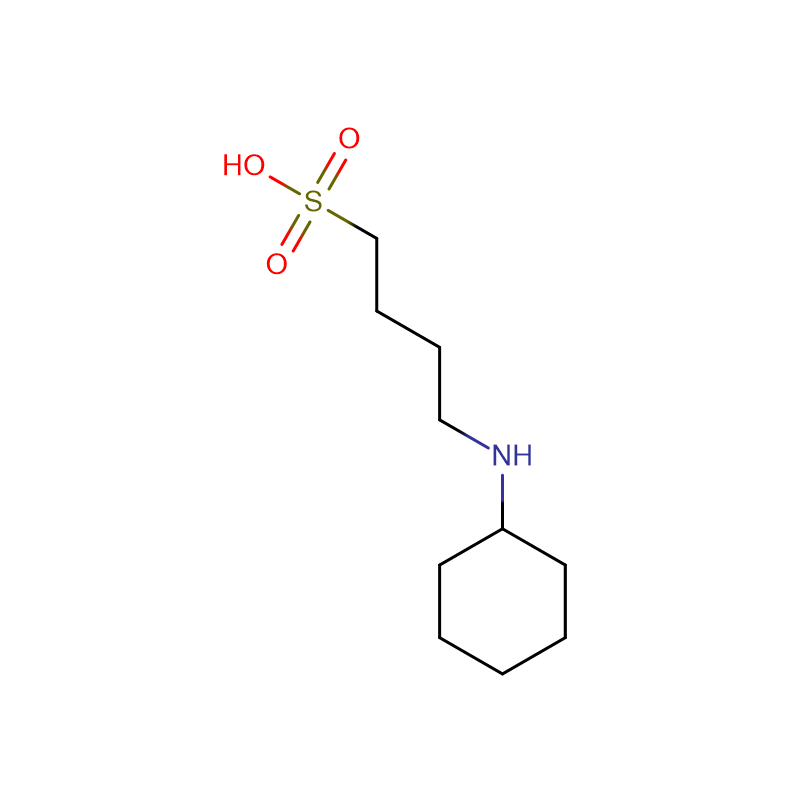HDAOS Cas:82692-88-4 98.0% White to off-white powder
| Catalog Number | XD90071 |
| Product Name | HDAOS |
| CAS | 82692-88-4 |
| Molecular Formula | C11H16NNaO6S |
| Molecular Weight | 313.30 |
| Storage Details | Ambient |
| Harmonized Tariff Code | 29225000 |
Product Specification
| Appearance | White to off-white powder |
| Assay | 98.0% |
| Heavy metals | <20ppm |
| Molecular Weight | 313.3 |
| Water Content | <0.5% |
| Residue on Ignition | <0.1% |
N-(2-Hydroxy-3-sulfopropyl)-3,5-dimethoxyaniline sodium salt Usage and Synthesis
Biological activity: HDAOS is a novel Trinder's reagent, a highly water-soluble aniline derivative, which is widely used in diagnostic assays and biochemical tests.
Application: The new Trinder's reagent is a highly water-soluble aniline derivative, which is widely used in diagnostic detection and biochemical tests. There are several advantages over conventional chromogenic reagents in the colorimetric determination of hydrogen peroxide activity. The new Trinder's reagents are stable enough to be used in both solution and experimental pipeline detection systems. A novel Trinder's reagent during the oxidative coupling reaction with 4-aminoantipyrine (4-AA) or 3-methylbenzothiazolesulfonehydrazone (MBTH) in the presence of hydrogen peroxide and peroxidase Chemicalbook , forming very stable violet or blue dyes. The molar absorbance of the dye coupled with MBTH was 1.5-2 times higher than that of the dye coupled with 4-AA; however, the 4-AA solution was more stable than the MBTH solution. The substrate is enzymatically oxidized by its oxidase to produce hydrogen peroxide. The hydrogen peroxide concentration corresponds to the substrate concentration. Therefore, the amount of substrate can be determined by the color development of the oxidative coupling reaction. Glucose, alcohol, acyl-CoA and cholesterol can be used to detect those substrates coupled to the novel Trinder's reagent and 4-AA. There are 10 new Trinder's reagents available. Among the new Trinder's reagents, TOOS is the most commonly used. However, for a specific substrate, testing different classes of novel Trinder's reagents is necessary to develop the optimal detection system.


